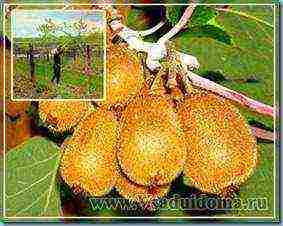Content
04.08.2017 
Content
- Greenhouse arrangement
- The nuances of growing
- Sowing mycelium
- Pros and cons
The vicissitudes of the weather do not always allow for a good harvest of mushrooms. Fans of "quiet hunting" are forced to return home with nothing, and yet even chanterelles have long been raised at home. But just one order of seeds by mail is not enough here, equip a greenhouse and prepare a suitable soil.
Greenhouse arrangement
It is not necessary to build a new structure, you can use the old greenhouse, in which cucumbers, peppers, other vegetables and herbs were previously grown, by installing racks inside. It is not possible to deal with chanterelles, as well as porcini mushrooms on an industrial scale due to the thoroughness of the process, so farmers, owners of summer cottages, country houses with a small plot grow them for sale. The mycelium is bought or harvested caps are used for these purposes. In addition, additionally:
- compost is harvested, consisting of manure, chopped straw, dry grass, sawdust, superphosphate, to which a little gypsum and water are added;
- an irrigation system is installed, since for successful cultivation it will be necessary to ensure high humidity - at least 90%;
- partial darkening is created using a grid, cloth devices, thanks to which the compost will better retain moisture, and the mycelium will not suffer from too bright sunlight;
- an air conditioning system is being installed, high-quality ventilation and comprehensive lighting are provided.
If the owner's main dream is only to provide the family with a valuable product, then expensive automatic equipment should be dispensed with. Then watering in a small greenhouse will be carried out manually, the care of airing, maintaining a stable temperature will fall on the shoulders of the summer resident.

The nuances of growing
Chanterelle is rich in carotene, as evidenced by its bright red hue, as well as amino acids, minerals and vitamins. The product helps to improve immunity, inhibits the development of pathogens, is used for the prevention of hepatitis, eye diseases, liver treatment, and reduces inflammation. This type of mushroom feels most comfortable in regions with a temperate climate, without sudden changes.
The cultivation process is especially successful for those who have taken care of creating compost with sawdust of beech, spruce, fir, pine or oak, near which chanterelles develop especially well. The soil in the greenhouse, if grown directly on the ground, or in shelves, mixed with compost, should be slightly acidic.
Chanterelle seeds, that is, mycelium, are very sensitive to cold weather, therefore, it is advisable to provide heating in the structure, but if the weather is not too harsh, the planting site is covered with a layer of fallen leaves and needles, additional artificial materials, which are carefully removed in the spring, after warming up the air. Harvesting from the home mycelium located on the personal plot is carried out within 1–1.2 years after planting.
Sowing mycelium
The creation of an optimal microclimate directly affects the quantity and quality of the crop. Even when buying first-class material, experienced summer residents still additionally bring sod collected from the foot of coniferous trees from the forest.The mycelium can also be prepared independently: by collecting uterine material or to bury the mycelium brought from the forest. In the first case, caps and legs of mushrooms cut into pieces of medium size are used. They are harvested in the fall, dried together with the soil substrate taken from the place of germination, and with the onset of spring and summer they are sown in a greenhouse.
During storage, the caps with humus are placed in bags, where they are provided with:
- dry environment;
- stable temperature;
- oxygen access;
- coolness and darkness.
Planting mycelium can be practiced until the last days of summer. If the mycelium stocks run out, the remnants of the fresh crop are used. A simplified option for the preparation of planting material is to grind fully ripe mushrooms and soak them in water for 5–7 hours. A small amount of sugar is added to make the medium nutritious. Further, pits with a depth and diameter of at least 10–14 cm are created in the soil on shelves or greenhouse soil, which are abundantly watered and filled with mother material. After that, the planting place is covered, as mentioned earlier, with foliage, needles, moss and even forest grass.
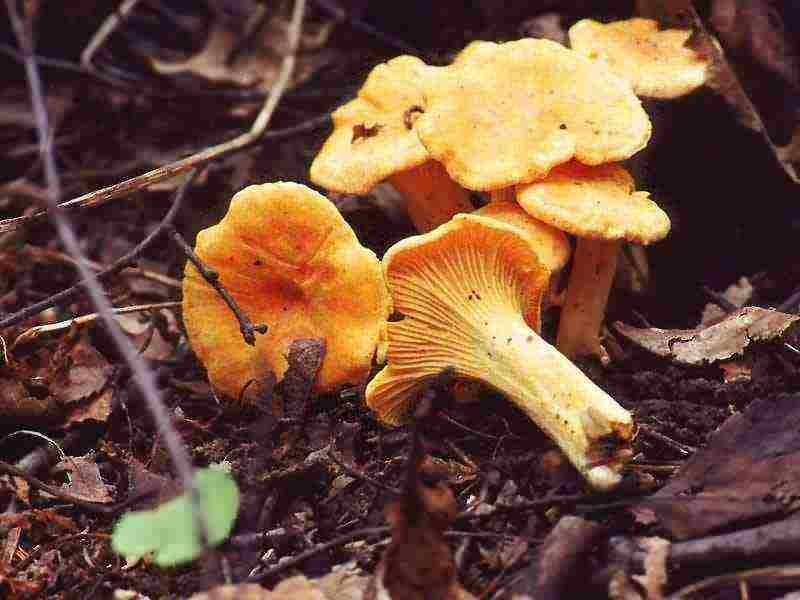
Pros and cons
So why is it better to grow mushrooms in a greenhouse rather than pick them in nature? Hikes in the forest can be organized simply for walking, admiring nature. But your own harvest is guaranteed to be of high quality, its use does not threaten with poisoning. In addition, domestic chanterelles do not accumulate toxins and, under suitable conditions, can produce crops throughout the year, you just need to take care of the planting material and, at the initial stage, equip a greenhouse located in the garden or in the garden. In addition, these mushrooms are always in demand on the market, where it is more profitable to sell them oyster mushrooms, champignons.
The disadvantage of this method is the relatively long period before the first harvest. Chanterelles, like other mushrooms grown at home, also require close attention, temperature control, moisture and ventilation. It is worth considering that in addition to the medicinal characteristics of the product, there are contraindications to its use. It is forbidden to eat chanterelles for babies under 3 years old, nursing mothers, pregnant women.
Of all the species of valuable mushrooms, the chanterelle is most appreciated by mushroom growers and lovers of mushroom cuisine. These red-haired beauties contain many useful substances and have long been used in folk medicine. Many delicious Russian dishes are prepared from them.
More recently, chanterelles could be found in a forest belt near every city. But now there are much fewer of them, so the issue of home cultivation of this valuable breed is more relevant than ever.
Valuable properties of chanterelles
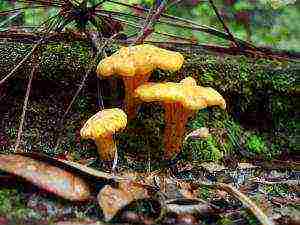
Lat. Cantharellus cibarius
In many regions, chanterelles are considered a valuable species of mushrooms. They have a pleasant aroma and delicious pulp. For this they are so adored by connoisseurs of Russian cuisine - chanterelles are good in any form. Marinated, fried, dried, salted, in scrambled eggs: each dish is wonderful in its own way thanks to the delicate mushroom taste of these ginger favorites.
The composition of mushrooms includes essential amino acids, vitamins and trace elements. They are also rich in beta-carotene, and therefore have their own bright carrot color.
The benefits of chanterelles in the treatment and prevention of hepatitis C, liver and eye diseases are known. For a long time, these mushrooms have been used to strengthen the immune system and suppress inflammatory processes in the dank season.
The folk craft of collecting saffron milk caps for sale can be very profitable in good years. Experienced mushroom pickers appreciate them for the fact that they are rarely affected by worms, and during transportation they retain their presentation, aroma, and freshness.
The peculiarities of breeding chanterelles are such that in the conditions of a personal plot it is hardly possible to get a large harvest from them.These are not champignons or oyster mushrooms, which have learned to grow on an industrial scale in huge quantities. But it is quite possible to provide your family with healthy and tasty red mushrooms for one season, you just need to find a suitable tree under which you can arrange a small mushroom plantation.
How do chanterelles grow in the forest?

Chanterelle harvest
Even an inexperienced mushroom picker will notice chanterelles in the forest thanks to their bright orange color and the unusual structure of the mushroom cap, wavy at the edges and smoothly turning into a thick leg. They always grow in families in shady, humid places, preferably on coniferous litters near pines and spruces.
The average diameter of their caps is 8 cm, and the length of the leg is 6 cm. However, not only red varieties of these mushrooms are found in nature, there are also gray chanterelles. They are gray in color and turn black when cooked, but they are also edible.
By the way of its life, the fungus belongs to the mycorrhizal species. This means that it forms mycorrhiza - an underground formation for symbiosis with a tree root. Chanterelle mycorrhiza grows deep into the ground and is in close contact with the underground parts of the symbiont tree. As a result of this interaction, mushrooms receive nutrients such as complex carbohydrates, phytohormones, amino acids.
The benefit for the tree is to enrich its roots with moisture and obtain mineral components from the soil through mycorrhiza. Therefore, the families of these fungi are more common in forests where the soil is not so fertile, but sufficiently moist.
In order to grow chanterelles at home on the site, you need to recreate as closely as possible the conditions in which they are used to developing in nature. And the main criterion for their good development is the presence of a forest tree in your garden. It does not have to be an old pine or spruce, mushrooms are found in the forest and at the foot of oaks and beeches.
The choice of planting material
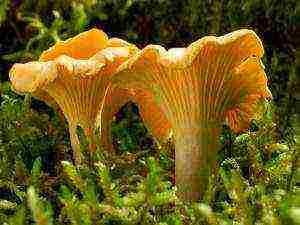
First harvest of chanterelles
If you nevertheless decide to grow chanterelles at home, you need to be patient, since this process is quite long. The first harvest can be expected only a year or two after sowing. But the result is worth it, it remains only to choose the optimal method of planting chanterelles on the site. There are several of them, let's try to understand them and identify the advantages.
Any planting begins with the preparation of planting material, and mushrooms are no exception. The peculiarities of breeding chanterelles and the secret of their successful cultivation lie in the choice of the same type of tree, near which the planting material was taken.
You need to start, first of all, from the type of future symbiont tree that is in your garden, and then go to a nearby forest belt, where chanterelles can grow. Next, you should look for such a partner tree infected with mushrooms, which is on your territory. The choice should fall on a healthy, sturdy tree, all parts of which, from the trunk to the crown, will be green and without drying out areas.
In the form of planting material, you can use:
- Hats of old chanterelles.
- Spore infusion.
- Portions of top soil near a partner forest tree.
- The finished dug out mycelium.
The use of old caps, infusion of mushroom spores and a ready-made dug out mycelium does not require lengthy procurement of planting material. But the use of the top soil containing mushroom mycelium requires preparation for a year. However, it is this method that experienced mushroom growers advise to use, since its effectiveness is almost always equal to one hundred percent.
Spore methods of sowing chanterelles
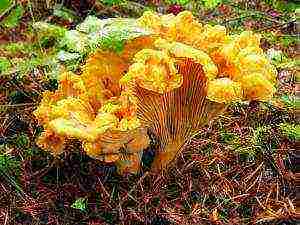
Chanterelles raised with spores
Like most mushrooms, the chanterelle can be planted by infecting the roots of the tree with spores or spreading fungal mycelium near the tree. Chanterelle spores can be obtained from mushroom caps or from a prepared infusion.
To harvest the caps of saffron milk caps, you need to go to the nearest forest belt and find there the same tree that will be in symbiosis with them on your site.
If there are already myceliums with fruit bodies under the forest tree, you can safely cut off several caps from old overripe mushrooms. It is also recommended to bring along a small amount of the upper forest floor on which the chanterelles grew.
Hats from the forest should wither a little, and then they are laid out under the partner tree and covered with branches, leaves, and the top layer of litter brought from the forest.
Caring for chanterelles in this case comes down to maintaining constant soil moisture around the symbiont tree, since mushrooms love moisture, but waterlogging is also destructive for them.
You can go the other way, and prepare a spore infusion from these old hats:
- The hats are placed in a bucket of water, preferably rainwater. Add 50 g of sugar there.
- After a day, the caps are crumpled in water so that they are completely softened, and the solution is filtered.
At a darkened place under a tree, the top layer of earth is removed to a depth of 15 cm, with a diameter of about 1.5 meters. To kill unnecessary microorganisms in this area, which can compete with fungal spores, it is watered with a decoction of oak bark.
After 2 - 3 hours after this, the open area is watered with a decoction of chanterelle spores, and the mushroom pulp remaining on the gauze is placed on top of the open areas of the tree roots.
The hole is buried with removed soil and carefully watered along the trunk so as not to erode the soil with sowing.
Caring for a tree infected with fungal spores will consist of regular, moderate watering.
Already next summer, chanterelles will begin to grow near the partner tree.
Sowing chanterelles with mycelium
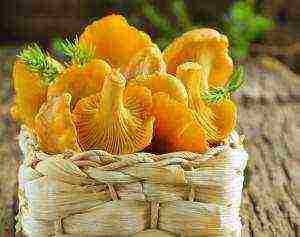
Chanterelles
Chanterelles can be propagated not only by spores, but also by ready-made mycelium, which is the smallest vegetative bodies of the fungus. Mycelium filaments are abundant in the soil around trees that have ever had chanterelles.
The fruiting bodies of the mushrooms themselves may not be visible on the surface, but myceliums always remain in the ground in order to develop at an opportune moment. The method of replanting with mycelium is recognized as the most reliable in the case of breeding chanterelles, although it may take longer before waiting for the first harvest.
The sampling of soil takes place in the forest located closest to the site, near the same tree, healthy in appearance. It is best to do this in mid-spring or late summer. Several such layers of soil are dug out, one shovel wide and 15 cm thick. Each earthen lump must be moved and transported carefully so as not to damage the mycelium filaments.
Then the soil fragment is divided into 5 - 10 parts and each is placed in a separate bag or box, but not covered, leaving access to oxygen. These containers with the ground are stored in a cool place for a whole year until June next year. Such exposure will only benefit the mycelium: they will become more viable, and all other microorganisms in the soil will die. But it is important not to overexpose this soil, since the mycelium is capable of germination only for 15 months.

Chanterelles in the wild
In June next year, you can start planting. To begin with, you will need to dig holes around the partner trunk 20 cm deep. Dry soil with mycelium should be poured into these holes, tamping tightly. After planting, watered immediately, gently using the spray nozzle on the watering can.
Watering should be plentiful enough: there will be a liter of water for each hole, and at least 10 liters on the ground around them. It remains only to provide the plantings with a shelter in the form of branches, foliage, and a forest litter of needles taken with you is also suitable. Do not forget to water your mushroom plantings on time, especially in dry weather.
The appearance of families of red fungi can be expected next summer or even spring when the weather is favorable.
There is another interesting way to plant chanterelles in your garden using mycelium.
Suppose you do not have a suitable tree on the site that could become a symbiont for chanterelles. Then you should go to the forest and look after a young tree for yourself, but already infected with this fungus.
Having carefully dug up both the tree and the mushroom root, you can deliver them to the dacha and plant, as usual, plant seedlings. It is important to choose the right place for the forest guest: it must be sufficiently humid and free from direct sunlight.
While watching the video, you will learn about growing chanterelles at home.
When there is a desire, it is quite simple to grow chanterelles at home in the garden. To master the technology of their breeding, you do not need to have special skills; a novice mushroom picker can also use it. Caring for chanterelles is also easy to perform, and the result will not be long in coming.
Have you noticed a mistake? Select it and press Ctrl + Enter to tell us.
Vegetables
This beautiful and tasty mushroom, which is never wormy, is adored by mushroom pickers and gourmets. It's always nice to see the bright red chanterelle hat peeking out of the moss. Chanterelles are dried and pickled, harvested fried and salted. They prepare soups and pies, add to porridge and stuff pancakes with them. But there is no dish tastier than fried chanterelles with potatoes and onions. Scrambled eggs with chanterelles are also a recognized delicacy.
 Common chanterelle
Common chanterelle
About the benefits of chanterelles
Chanterelle is rich in vitamins, minerals and amino acids. The bright red carrot color is due to the high content of useful carotene. The mushroom is used in the prevention of various diseases, in the treatment of liver, hepatitis C, eye ailments. The chanterelle helps fight inflammatory processes, inhibits the growth of many pathogens, and increases immunity. A couple of decades ago, it was an ordinary mushroom, widespread in our forests. Today, near large cities, the chanterelle has become a rarity, as well as other valuable mushrooms.
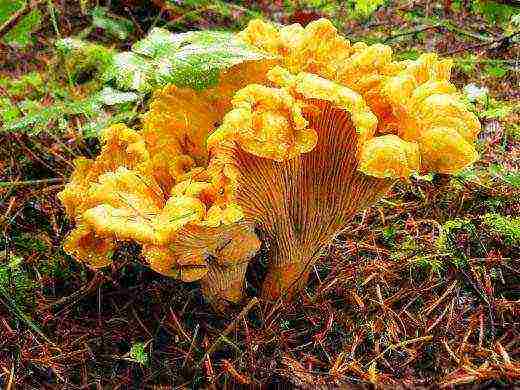 Chanterelle formosa,
Chanterelle formosa,
How to grow a chanterelle on the site?
Champignons and oyster mushrooms grown in large mushroom farms have long been familiar. Forest mushrooms are still not so common in industrial production, but skilled amateur mushroom growers successfully grow noble tubular mushrooms on their plots: boletus, boletus, boletus. The chanterelle, whose genus numbers up to sixty species, is an infrequent visitor to the gardens, but if you create the necessary conditions for it, it is possible to get a good harvest from your plot.
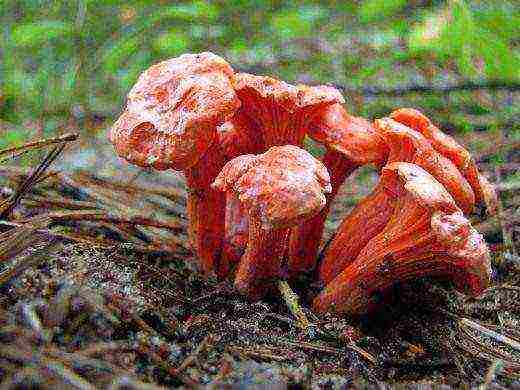 Cinnabar red chanterelle,
Cinnabar red chanterelle,
The chanterelle fungus forms mycorrhiza - the mycelium of the fungus grows into the root system of the tree. Mycorrhiza is a symbiotic formation, the plant supplies the fungus with nutrients, the mycorrhiza supplies minerals to the roots of the partner, improves the supply of moisture. The best partners of the chanterelle are pine and spruce, the mushroom can cooperate with oak, beech and some other types of trees. Attempts to "make friends" the forest mushroom with garden trees are doomed to failure.
So, we know the main condition, without which it is impossible to grow a chanterelle: the mushroom plantation should be located under the partner tree. If there is none, you will have to plant. It is better to choose a young tree in the mushroom forest, immediately with the mycelium. The mycelium is located at a distance of 15-20 cm from the surface, it is advisable not to destroy the fungus root. It is necessary to grab together with the tree a couple of bags of the upper layer of forest soil and coniferous litter. It is better to plant a forest tree with a mushroom root in a semi-shady place on the site. When planting, the mycelium should be in the forest soil, covered with needles on top. The mycelium does not tolerate both drying out and waterlogging, so moderate watering will have to be carried out regularly. There is no need to fertilize the soil: the chanterelle will receive nutrients from the partner's roots.
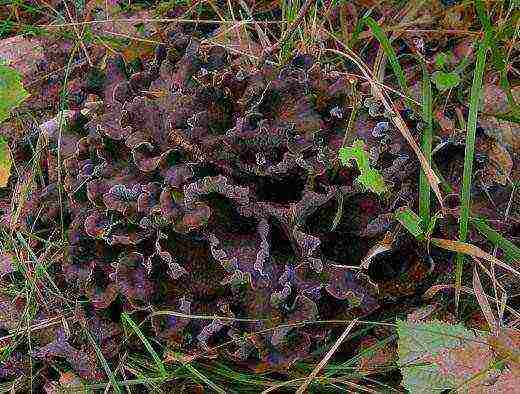 Chanterelle gray
Chanterelle gray
If a pine, spruce, or other forest tree is already growing on the site, chanterelles can be planted to it. Moreover, the spruce can be blue, and the mountain pine, the yield does not depend on the variety and subspecies of the tree. There are two methods: planting mycelium and sowing spores.
When sowing, choose the caps of old, overripe from a gastronomic point of view, mushrooms. Some amateur mushroom growers advise simply scattering the caps under the tree, others recommend soaking them in water, and after a day, having mixed well, pour the planting site with the solution. The main condition is to further maintain a constant humidity level: drying out or waterlogging will destroy the planting material.
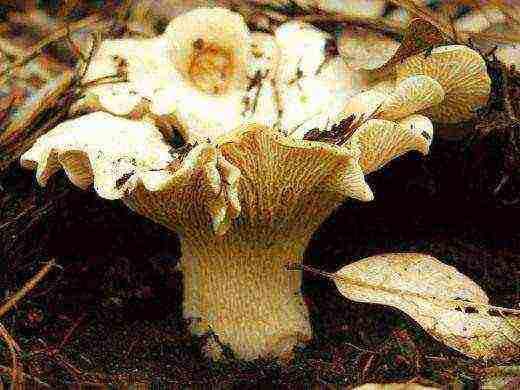 Chanterelle white
Chanterelle white
A more reliable and faster way is to plant mycelium dug out in the forest. Pits are dug under the symbiont tree, the depth is about 20 centimeters, the size in the plan is not important, but usually it is 15x15 cm.The mycelium is placed there together with forest soil, covered with moss, coniferous or leaf litter on top. The watering regime is the same as for spore planting. Planting times are from June to September. There is one subtlety: the mycelium must be prepared under a tree of the same species, which will serve as a symbiotic partner.
Subject to the above conditions, especially the humidity regime, by the beginning of June next year it will be possible to taste chanterelles from your own garden.
Chanterelles rightfully enjoy the well-deserved fame among mushroom pickers. Bright yellow, tasty, healthy, pleasing to the eye. They are great in any dish. Many owners of personal plots are wondering: is it possible to grow chanterelles in the country or in the garden? Those who have tried to do this claim: nothing is impossible. You just need to know the tricks to help plant and grow an unusual country "resident".
Features of the growth of chanterelles
In the forest, the mushroom grows, forming an advantageous neighborhood with the roots of certain trees. The mycelium grows inside the roots, saturating the tree with useful components, and in return receives water, nutrients and elements necessary for growth. Therefore, the cultivation of chanterelles is possible only if there are overgrown rhizomes of trees on the site. You can "add" mycelium to any coniferous tree, but best of all it is adjacent to spruce, pine. A good harvest of chanterelles is obtained under oak trees.
If there are coniferous trees on the site, chanterelles can be bred independently
Advice. If the planting material was collected under a spruce, it is also necessary to plant it on the site under a spruce. Do the same with mycelium collected under other trees. So the mycelium will be better able to take root and give a good harvest. "
Do not try to "make friends" chanterelles with fruit trees, this venture is doomed to failure. The mycelium needs microelements for growth, which it receives only from the roots of the familiar partner tree.
What is needed for landing
It is best to plant chanterelles on the site at the beginning of summer, when the weather is warm. The main thing that is necessary for the growth of mushrooms is a coniferous tree or an oak tree. You shouldn't wait for the harvest without them. Both forest species of conifers and decorative spruces are suitable for rooting mycelium.
You can bring a young Christmas tree dug out along with the roots and mycelium to the site from the forest. Such a forest beauty will become not only a decoration of the site. It guarantees good survival rate and future high yield.
On the site, chanterelles are planted in early summer
Choose a tree in an area that has access to sunlight. Since the mycelium of chanterelles grows quite widely, provide free space around the landing site.
In addition to the donor tree, you will also need:
- uterine material: mycelium, caps or mycelium solution;
- sod from under the tree, where the mycelium was dug out or the caps were collected;
- covering material: forest moss, leaves, needles, blades of grass;
- shovel;
- loda for watering.
For beginners, the question often arises: is it possible to plant chanterelles in a greenhouse? It is possible, but it is useless.For proper growth, they need an ally tree. If it is not there, the mycelium will not be able to develop. For the growth of mushrooms, special devices are not needed: greenhouses, hotbeds, a special substrate, dry stumps. The main thing is to provide the mycelium with conditions similar to natural ones, then the harvest will not be long in coming.
It is better to breed chanterelles without a greenhouse, in conditions close to natural
How to plant correctly
Moisten the soil liberally a few days before planting. Spill it well with a strong infusion of oak bark. It disinfects the soil, creating a favorable microclimate for the mycelium.
There are two main types of planting of chanterelles: mycelium or spores.
- In the first case, you will need mycelium collected in the forest. Dig the mycelium together with pieces of soil and transplant it under a tree on the site. Then cover it from above with moss, fallen needles or foliage. It is best to cover the planting site with leaves and needles collected from the forest. If the mycelium is harvested in the fall, it must be stored until spring by placing it in a cool, well-ventilated area.
- When planting with spores, you will need a specially prepared solution. To do this, collect overgrown mushroom caps that are not suitable for consumption. Wash them, mash, then soak in lightly sweetened clean water. Strain the solution after 24 hours. The remaining pulp will make a good planting material.
Chanterelle mycelium can be found independently or purchased ready-made
Some connoisseurs plant chanterelles in an unusual way, simply by scattering broken caps of old mushrooms under a tree. Before planting, remove the top of the soil, slightly exposing the roots. Water the unfolded hats abundantly, cover with forest moss and needles and leave for germination.
Watering features
Chanterelles love moist soil. Water the places where the planting material was planted lightly, and spill the space between them, on the contrary, with plenty of water. Water the mycelium once every 7-10 days in the absence of rain. Reduce watering in wet weather.
Advice. The stores sell ready-made mycelium for planting various mushrooms. As practice has shown, the ready-made solution gives a lower yield compared to natural sowing material. Use a commercial solution for additional nutrition of the mycelium by watering the soil with it.
When planting in any way, after 2-3 weeks, gently lift the top cover layer. If everything is in order with the mycelium, you will see purple threads with a greenish tinge stretching through the soil. Delicious mushrooms will grow from this growing mycelium.
Chanterelles love moist soil
When to wait for the harvest
The first chanterelles will appear on the site one year after planting. Harvest guarantee - proper care. To keep the mycelium overwintered, cover it with hay, leaves or branches. In the spring, when the weather is warm, remove everything from under the tree so that the mushrooms can grow.
Do not dig soil around the tree, keep the mycelium at rest. It is wonderful if grass brought from the forest sprouts on the mycelium. Please be patient, because the reward for your efforts is delicious chanterelles grown on your own plot.
Collecting chanterelles - video
